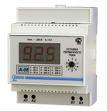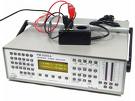Principles of selection of measuring devices for measuring electrical quantities
Measuring devices, depending on their purpose, field of application and operating conditions, should be selected according to the following basic principles:
1) it must be possible to measure the investigated physical quantity;
2) the measurement limits of the device must cover all possible values of the measured quantity. With a large range of changes in the latter, it is advisable to use multi-range devices;
3) the measuring device must provide the necessary measurement accuracy.
Therefore, you should pay attention not only to the class of the selected measuring device, but also to the factors that affect the additional measurement error: non-sinusoidal currents and voltages, deviation of the position of the device when it is installed in a position other than normal, the influence of external magnetic and electric fields, etc. NS .;
4) when performing some measurements, an important role is played by the efficiency (consumption) of the measuring device, its weight, dimensions, the location of the controls, the uniformity of the scale, the ability to read the readings directly on the scale, speed, etc.;
 5) the connection of the device should not significantly affect the performance of the tested device, therefore, when choosing devices, you should take them into account internal resistance… When the measuring device is connected to matched circuits, the input or output resistance must be of the required nominal value;
5) the connection of the device should not significantly affect the performance of the tested device, therefore, when choosing devices, you should take them into account internal resistance… When the measuring device is connected to matched circuits, the input or output resistance must be of the required nominal value;
6) the device must meet the general technical safety requirements for making measurements established by GOSG 22261-76, as well as technical conditions or private standards;
7) the use of devices is not allowed: with obvious defects in the measuring system, housing, etc.; with an expired inspection period; non-standard or not certified by the departmental metrology service, which do not correspond to the insulation class for the voltages to which the device is connected.
 The accuracy of the measurement depends on the method of measurement and accuracy class of the selected devices… The accuracy class of the device is determined by its error. The deviation of the measurement result from the true value of the measured value is called measurement error.
The accuracy of the measurement depends on the method of measurement and accuracy class of the selected devices… The accuracy class of the device is determined by its error. The deviation of the measurement result from the true value of the measured value is called measurement error.
According to the principle of operation, devices are divided into electromagnetic (scale designation — E), polarized, magnetoelectric (M), electrodynamic (D), ferrodynamic, induction, magnetic induction, electrostatic, vibration, thermal, bimetallic, rectifiers, thermoelectric (T) ,  electronic (F). The scale of the device shows the symbols that classify the error and the measurement conditions.
electronic (F). The scale of the device shows the symbols that classify the error and the measurement conditions.
GOST provides the following classes of accuracy for electrical measuring devices — 0.05; 0.1; 0.2; 0.5; 1.0; 1.5; 2.5; 4.0; for shunts and additional resistors to devices — 0.02; 0.05; 0.1; 0.2; 0.5; 1.0. In practice, when assessing the condition of equipment, tools with an accuracy class of 0.5-2.5 are used, for checking tools-0.02-0.2.
